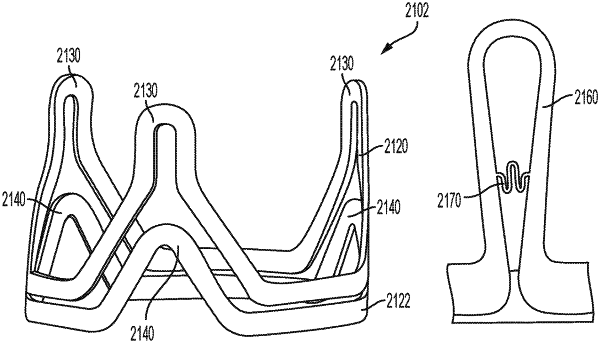| CPC A61F 2/2418 (2013.01) [A61F 2/2412 (2013.01); A61F 2/2415 (2013.01); A61F 2/2475 (2013.01); F16K 15/147 (2013.01); A61F 2240/001 (2013.01); A61F 2250/001 (2013.01); A61F 2250/0071 (2013.01); A61F 2250/0082 (2013.01)] | 21 Claims |

|
1. A prosthetic valve, comprising:
a first diametrically adjustable frame element configured to support a valve structure; and
a second diametrically adjustable frame element coupled to the first diametrically adjustable frame element, the second diametrically adjustable frame element including a selective expansion feature for reinforcement of the first diametrically adjustable frame element against compression at a first diameter at which the prosthetic valve is configured to be implanted and reinforcement of the first diametrically adjustable frame element against compression following diametric expansion of the first frame element to a second diameter that is larger than the first diameter;
wherein the selective expansion feature comprises an arch-shaped element including a first leg, a first base portion at a base of the first leg, a second leg, and a second base portion at a base of the second leg; and
wherein the arch-shaped element further comprises an undulating member, and wherein a first end of the undulating member is connected to an interior surface of the first leg and a second end of the undulating member is connected to an interior surface of the second leg.
|